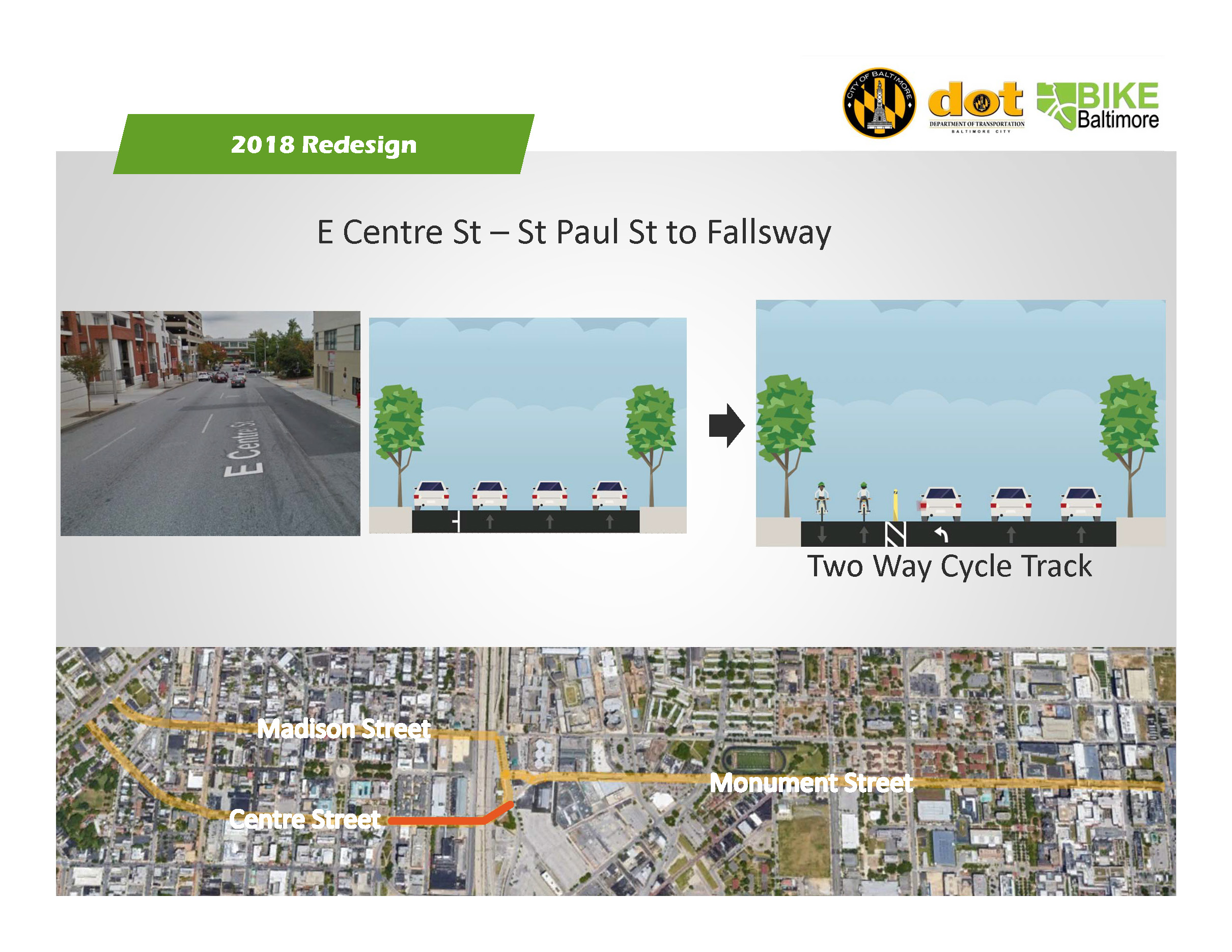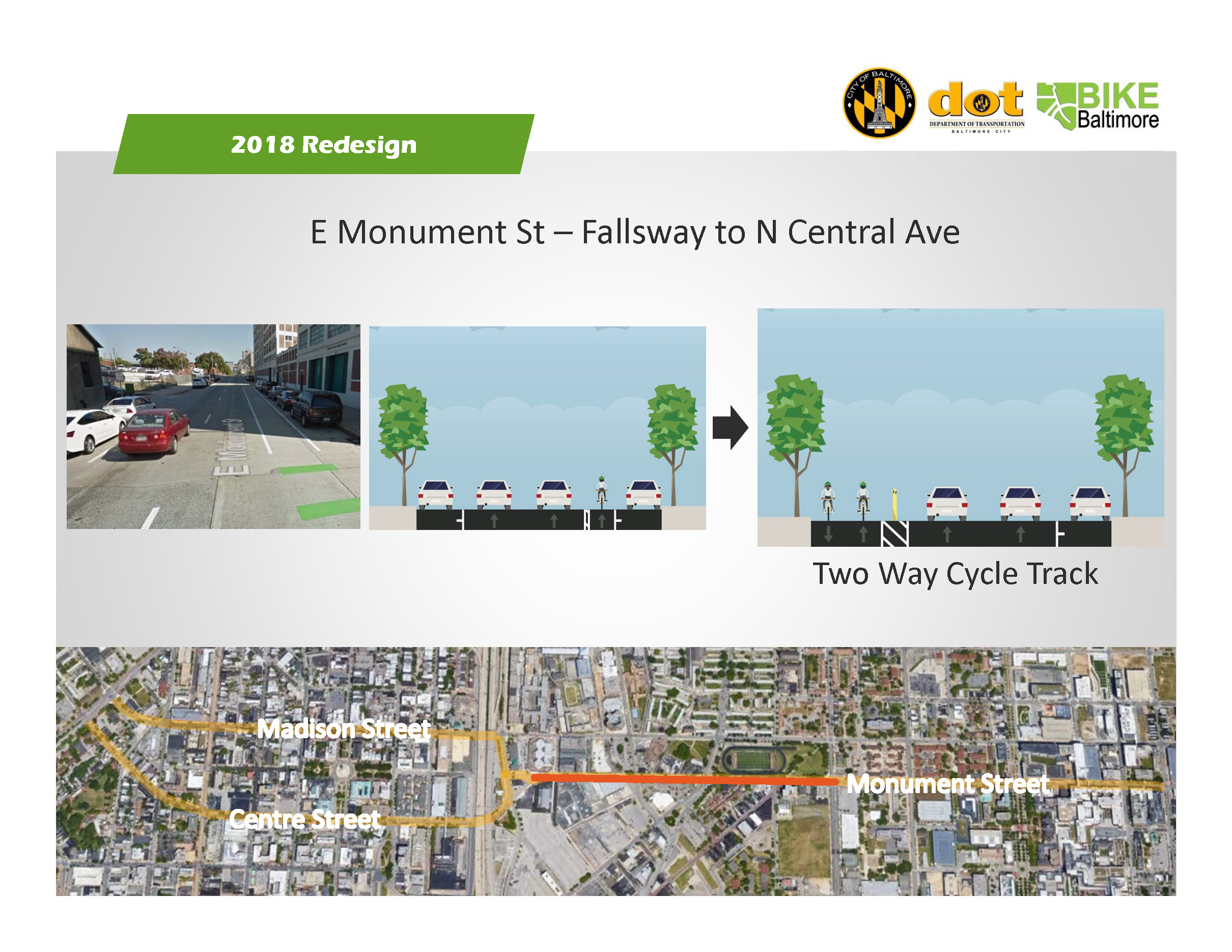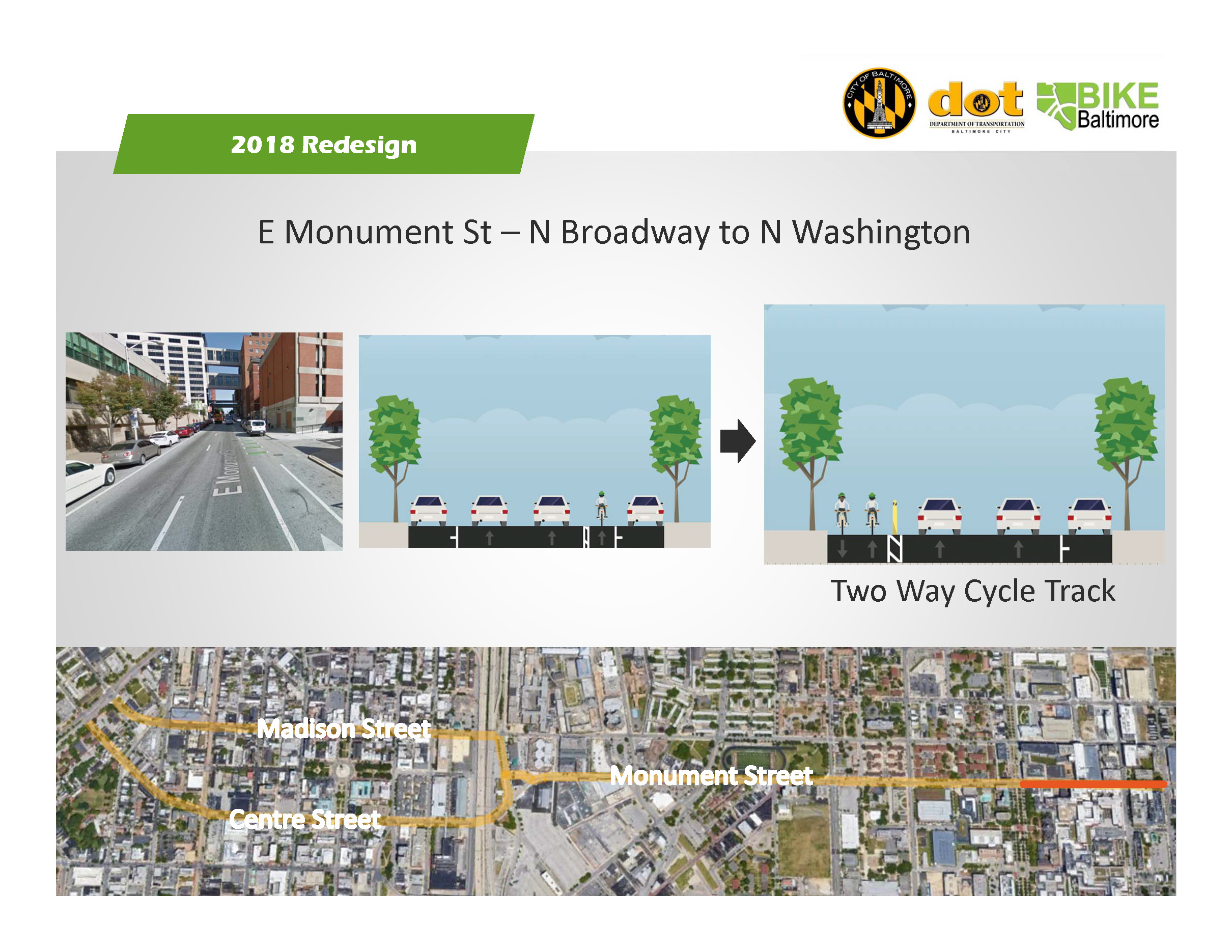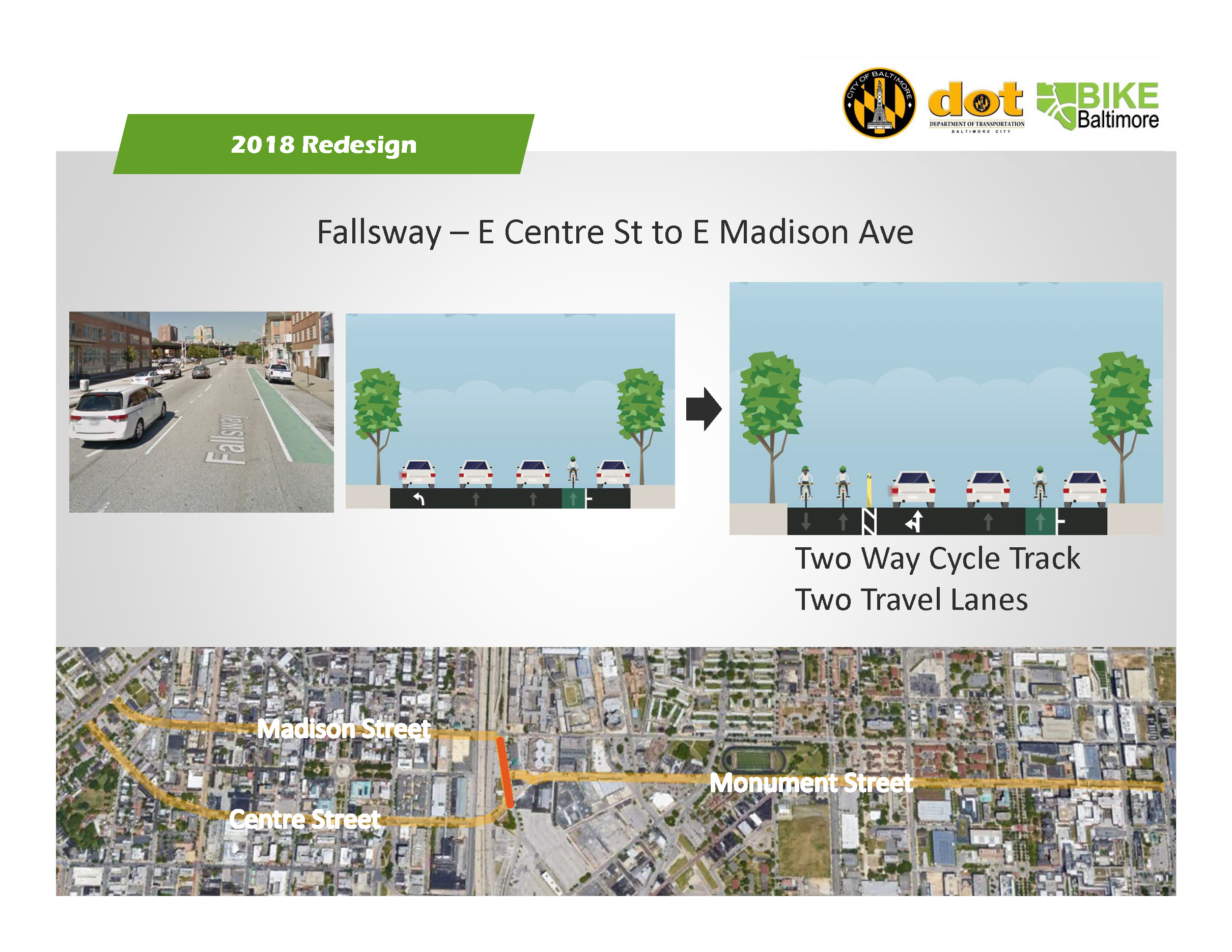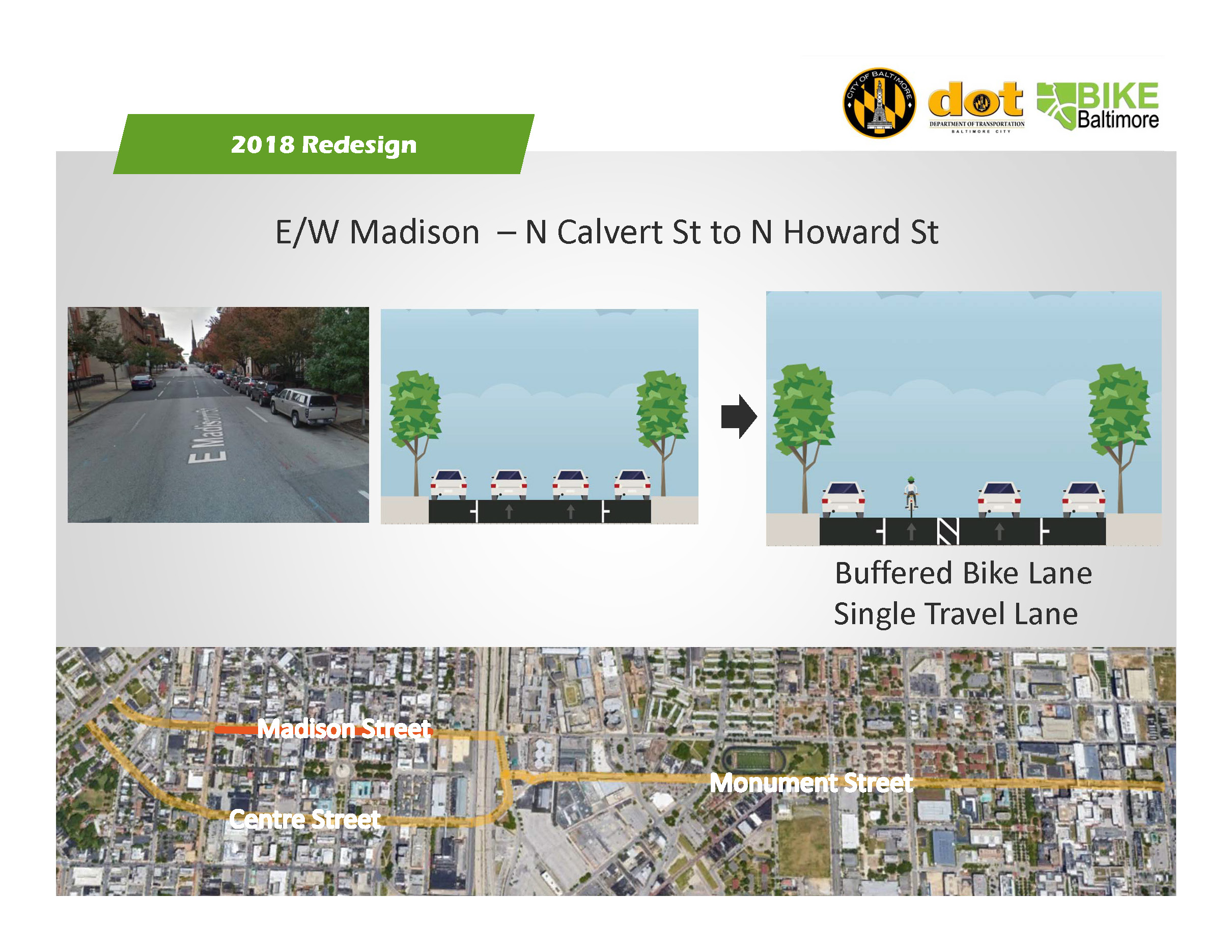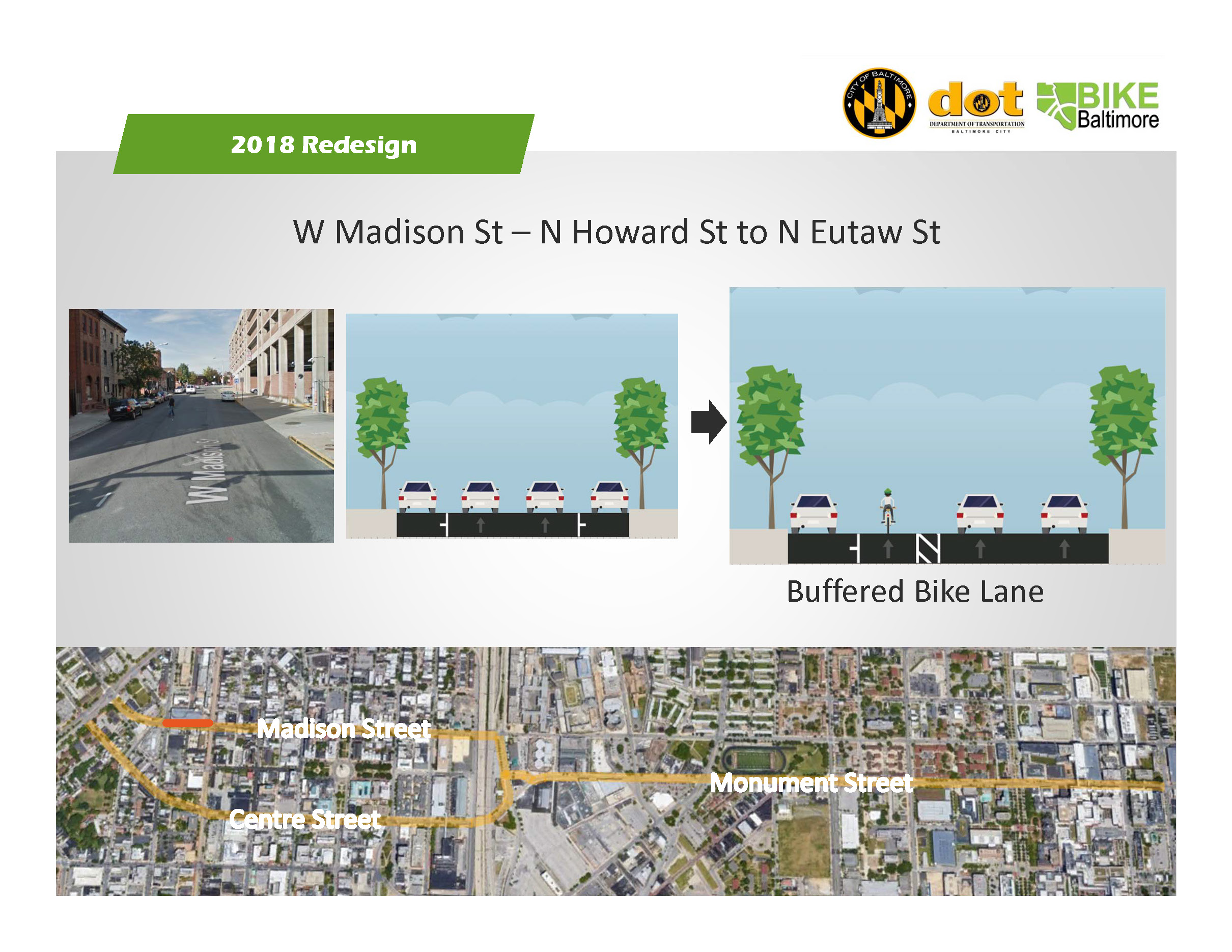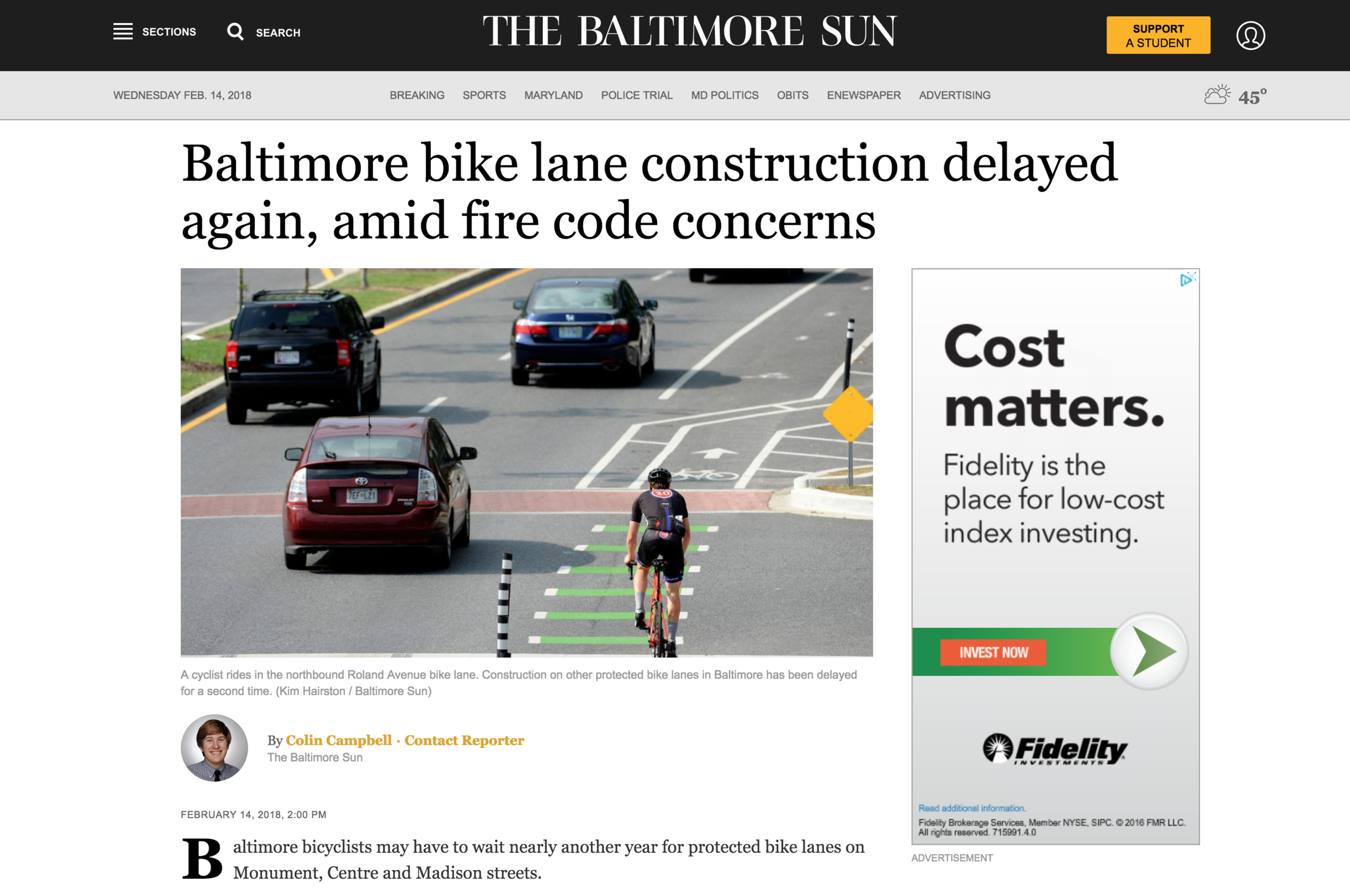One year ago we were celebrating saving the Potomac Street bike lane. And while that was a victory for bikes, we knew this was just the beginning of the fight to get a long term policy solution to an unfair application of the law.
For 14 months Bikemore staff worked tirelessly to pressure the City to come to a solution. And on Monday we saw that hard work pay off and scored a significant win. Baltimore City Council voted unanimously to remove Appendix D from the Fire Code and state that all new street design must conform to NACTO standards. This means that the Fire Department can no longer arbitrarily block the construction of bike lanes by pointing to a section of the fire code that makes zero sense in an urban environment.
And while we still await the Mayor signing the bill into law, we demonstrated that we are tenacious in our pursuit of a city that’s safe for people who bike. And that because of your support we can deliver groundbreaking wins.
Help us celebrate by making a donation to Bikemore today. Right now we need you more than ever. These wins are only possible because of support from people like you. With 40% of our operating budget funded through grassroots donations, we rely on individuals just like you stepping up and joining the fight for bikes. Help us secure the next win with a donation of $50 or more today.
Already gave? Forward this story to a friend who loves bikes, and let them know why you support Bikemore.
Check out some of our recent press on the issue:
“It’s important to note that this bill does not change BCFD’s role in project plans review,” she pointed out. “It simply ensures that conversation around fire access begins at a place that fully considers the benefits of designing a city safe for biking and walking.”
— City council passes bill altering fire code to address stalled bike lane, building projects, Baltimore Fishbowl
“This has been a year-long fight to make sure our city advances in progressive transportation planning,” said Liz Cornish, the director of Bikemore. “We think council made the right move and we look forward to the mayor signing this bill.”
— City Council repeals part of fire code to accommodate bike lanes, development, Baltimore Sun










